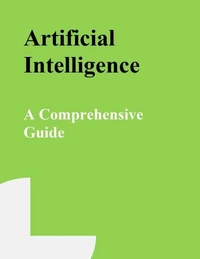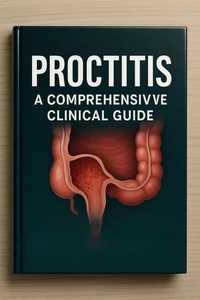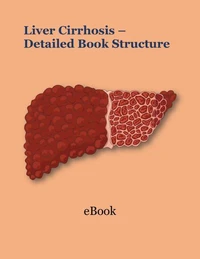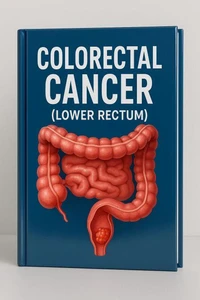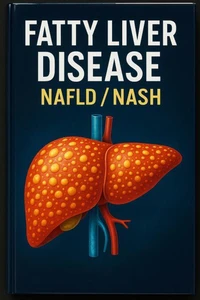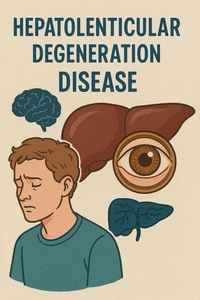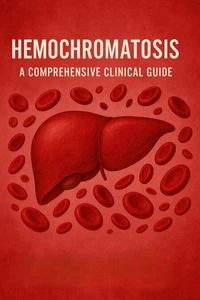Anemia
Par :Formats :
Disponible dans votre compte client Decitre ou Furet du Nord dès validation de votre commande. Le format ePub est :
- Compatible avec une lecture sur My Vivlio (smartphone, tablette, ordinateur)
- Compatible avec une lecture sur liseuses Vivlio
- Pour les liseuses autres que Vivlio, vous devez utiliser le logiciel Adobe Digital Edition. Non compatible avec la lecture sur les liseuses Kindle, Remarkable et Sony
 , qui est-ce ?
, qui est-ce ?Notre partenaire de plateforme de lecture numérique où vous retrouverez l'ensemble de vos ebooks gratuitement
Pour en savoir plus sur nos ebooks, consultez notre aide en ligne ici
- FormatePub
- ISBN8232636531
- EAN9798232636531
- Date de parution19/06/2025
- Protection num.pas de protection
- Infos supplémentairesepub
- ÉditeurHamza elmir
Résumé
Anemia is more than just a medical condition-it is a silent epidemic affecting millions worldwide, often going unnoticed until it severely impacts daily life. "Anemia: Understanding the Silent Struggle" is an in-depth exploration of this widespread disorder, shedding light on its causes, types, diagnosis, and treatment, while humanizing the journey of those who live with it every day. Written with clarity and depth, this comprehensive guide takes readers through the complexities of anemia in both clinical and everyday contexts.
From fatigue and weakness to cognitive difficulties and developmental delays, anemia can manifest in subtle yet profound ways. This book aims to bring awareness to these symptoms, enabling patients, caregivers, and healthcare professionals to better understand the significance of early detection and intervention. The book begins by demystifying the fundamentals of anemia-what it is, how it affects the body, and why it occurs.
Through easy-to-understand language and illustrations, readers are introduced to the central role of red blood cells and hemoglobin in oxygen transport and the consequences when their levels are insufficient. The major categories of anemia-iron-deficiency anemia, vitamin B12 deficiency anemia, folate deficiency anemia, hemolytic anemia, and aplastic anemia-are each addressed in detail. Each type is explored with explanations of its pathophysiology, common causes, risk factors, signs and symptoms, and recommended diagnostic tests.
In addition to clinical insights, the book delves into the real-world impact of anemia across different populations. Chapters explore anemia in women (particularly during pregnancy), children, the elderly, and those with chronic diseases such as kidney failure, cancer, or autoimmune disorders. This inclusive approach ensures a holistic view of how anemia manifests differently across age groups and medical backgrounds.
Treatment strategies-ranging from dietary modifications and iron supplementation to blood transfusions and bone marrow transplants-are discussed in practical terms, highlighting both medical options and lifestyle adjustments. The book also provides updated guidelines on iron-rich diets, meal planning, and the role of nutritional education in managing and preventing anemia. For healthcare professionals, it offers valuable insights into the latest research and clinical practices, promoting more patient-centered care.
One of the book's strongest features is its inclusion of patient stories. These narratives offer a powerful perspective on the emotional and psychological toll of living with anemia. Readers will hear from individuals who have struggled with chronic fatigue, misdiagnoses, and recurrent hospital visits, as well as from those who have found relief and regained vitality through proper treatment and support.
From fatigue and weakness to cognitive difficulties and developmental delays, anemia can manifest in subtle yet profound ways. This book aims to bring awareness to these symptoms, enabling patients, caregivers, and healthcare professionals to better understand the significance of early detection and intervention. The book begins by demystifying the fundamentals of anemia-what it is, how it affects the body, and why it occurs.
Through easy-to-understand language and illustrations, readers are introduced to the central role of red blood cells and hemoglobin in oxygen transport and the consequences when their levels are insufficient. The major categories of anemia-iron-deficiency anemia, vitamin B12 deficiency anemia, folate deficiency anemia, hemolytic anemia, and aplastic anemia-are each addressed in detail. Each type is explored with explanations of its pathophysiology, common causes, risk factors, signs and symptoms, and recommended diagnostic tests.
In addition to clinical insights, the book delves into the real-world impact of anemia across different populations. Chapters explore anemia in women (particularly during pregnancy), children, the elderly, and those with chronic diseases such as kidney failure, cancer, or autoimmune disorders. This inclusive approach ensures a holistic view of how anemia manifests differently across age groups and medical backgrounds.
Treatment strategies-ranging from dietary modifications and iron supplementation to blood transfusions and bone marrow transplants-are discussed in practical terms, highlighting both medical options and lifestyle adjustments. The book also provides updated guidelines on iron-rich diets, meal planning, and the role of nutritional education in managing and preventing anemia. For healthcare professionals, it offers valuable insights into the latest research and clinical practices, promoting more patient-centered care.
One of the book's strongest features is its inclusion of patient stories. These narratives offer a powerful perspective on the emotional and psychological toll of living with anemia. Readers will hear from individuals who have struggled with chronic fatigue, misdiagnoses, and recurrent hospital visits, as well as from those who have found relief and regained vitality through proper treatment and support.
Anemia is more than just a medical condition-it is a silent epidemic affecting millions worldwide, often going unnoticed until it severely impacts daily life. "Anemia: Understanding the Silent Struggle" is an in-depth exploration of this widespread disorder, shedding light on its causes, types, diagnosis, and treatment, while humanizing the journey of those who live with it every day. Written with clarity and depth, this comprehensive guide takes readers through the complexities of anemia in both clinical and everyday contexts.
From fatigue and weakness to cognitive difficulties and developmental delays, anemia can manifest in subtle yet profound ways. This book aims to bring awareness to these symptoms, enabling patients, caregivers, and healthcare professionals to better understand the significance of early detection and intervention. The book begins by demystifying the fundamentals of anemia-what it is, how it affects the body, and why it occurs.
Through easy-to-understand language and illustrations, readers are introduced to the central role of red blood cells and hemoglobin in oxygen transport and the consequences when their levels are insufficient. The major categories of anemia-iron-deficiency anemia, vitamin B12 deficiency anemia, folate deficiency anemia, hemolytic anemia, and aplastic anemia-are each addressed in detail. Each type is explored with explanations of its pathophysiology, common causes, risk factors, signs and symptoms, and recommended diagnostic tests.
In addition to clinical insights, the book delves into the real-world impact of anemia across different populations. Chapters explore anemia in women (particularly during pregnancy), children, the elderly, and those with chronic diseases such as kidney failure, cancer, or autoimmune disorders. This inclusive approach ensures a holistic view of how anemia manifests differently across age groups and medical backgrounds.
Treatment strategies-ranging from dietary modifications and iron supplementation to blood transfusions and bone marrow transplants-are discussed in practical terms, highlighting both medical options and lifestyle adjustments. The book also provides updated guidelines on iron-rich diets, meal planning, and the role of nutritional education in managing and preventing anemia. For healthcare professionals, it offers valuable insights into the latest research and clinical practices, promoting more patient-centered care.
One of the book's strongest features is its inclusion of patient stories. These narratives offer a powerful perspective on the emotional and psychological toll of living with anemia. Readers will hear from individuals who have struggled with chronic fatigue, misdiagnoses, and recurrent hospital visits, as well as from those who have found relief and regained vitality through proper treatment and support.
From fatigue and weakness to cognitive difficulties and developmental delays, anemia can manifest in subtle yet profound ways. This book aims to bring awareness to these symptoms, enabling patients, caregivers, and healthcare professionals to better understand the significance of early detection and intervention. The book begins by demystifying the fundamentals of anemia-what it is, how it affects the body, and why it occurs.
Through easy-to-understand language and illustrations, readers are introduced to the central role of red blood cells and hemoglobin in oxygen transport and the consequences when their levels are insufficient. The major categories of anemia-iron-deficiency anemia, vitamin B12 deficiency anemia, folate deficiency anemia, hemolytic anemia, and aplastic anemia-are each addressed in detail. Each type is explored with explanations of its pathophysiology, common causes, risk factors, signs and symptoms, and recommended diagnostic tests.
In addition to clinical insights, the book delves into the real-world impact of anemia across different populations. Chapters explore anemia in women (particularly during pregnancy), children, the elderly, and those with chronic diseases such as kidney failure, cancer, or autoimmune disorders. This inclusive approach ensures a holistic view of how anemia manifests differently across age groups and medical backgrounds.
Treatment strategies-ranging from dietary modifications and iron supplementation to blood transfusions and bone marrow transplants-are discussed in practical terms, highlighting both medical options and lifestyle adjustments. The book also provides updated guidelines on iron-rich diets, meal planning, and the role of nutritional education in managing and preventing anemia. For healthcare professionals, it offers valuable insights into the latest research and clinical practices, promoting more patient-centered care.
One of the book's strongest features is its inclusion of patient stories. These narratives offer a powerful perspective on the emotional and psychological toll of living with anemia. Readers will hear from individuals who have struggled with chronic fatigue, misdiagnoses, and recurrent hospital visits, as well as from those who have found relief and regained vitality through proper treatment and support.



